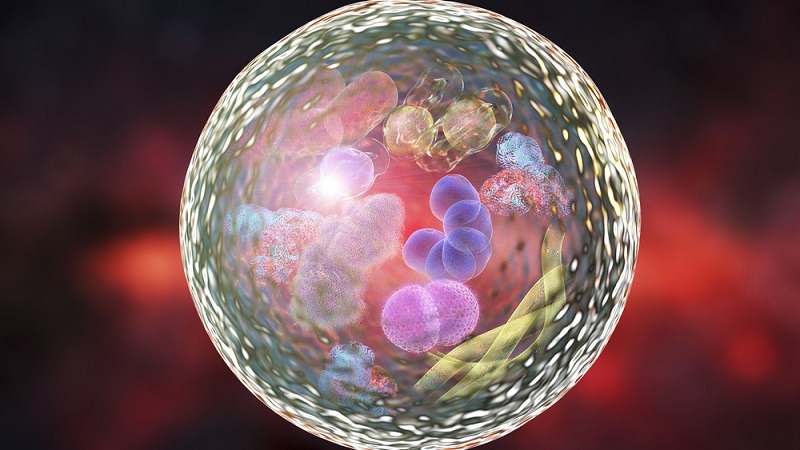Researchers have found that kinesin family member 9 (KIF9), a protein that diminishes with aging, is instrumental in allowing cells to consume harmful proteins and fights Alzheimer’s in a mouse model.

Fighting Alzheimer’s by Helping Neurons Consume Proteins
#1
Posted 21 January 2025 - 09:30 PM
Alzheimer’s is well-known as a proteostasis disease: it is characterized by amyloid beta plaques outside the cells and tau tangles inside them [1]. These protein accumulations have been reported to occur alongside the failure of autophagy, and prior work has found that improving autophagy may be effective in preventing Alzheimer’s [2].
However, autophagy is a complicated biochemical process with many moving parts. Within neurons, the kinesin family is responsible for transporting lysosomes, core components of autophagy, along the microtubules inside the cell, and their decline is associated with brain degeneration [3]. While overexpressing kinesins have been found to improve autophagy [4], there has been little work in their connection to Alzheimer’s, and the researchers noted that KIF9 in particular has gone mostly unevaluated.
Transport is crucial
In their first experiment, the researchers examined a well-known mouse model of Alzheimer’s and compared it to wild-type mice. They found that after six months, compared to the wild-type mice, the Alzheimer’s model mice began to suffer significant reductions in KIF9 and significant increases in the proteins p62 and LCIII, which is evidence of degraded autophagy. These differences became even more stark after 12 months of life.
Next, the researchers turned to human cells. Beginning with HEK293, a commonly used cell line, the researchers used a variant, 2EB2, that produces amyloid precursor proteins. That variant, as expected, experienced diminished KIF9 and substantially decreased autophagy. This effect was found to be directional: forcing the 2EB2 cells to express more KIF9 reduced the presence of amyloid precursors and restored the autophagic components, autophagosomes, that were normally reduced in these cells.
Further research that specifically targeted individual parts of the autophagic process found that KIF9 had no special ability in directly restoring the structures themselves; rather, it was simply doing its job as a transporter, bringing these organelles to where they need to be.
Effective in mice
The researchers then used an adeno-associated virus (AAV) to determine whether an increased expression of KIF9 could ameliorate Alzheimer’s in model mice, performing behavioral tests at 5 months and brain tissue examination at 6 months.
The KIF9 AAV did nothing to the behavior of wild-type mice, as measured by an open-field test, the Barnes maze test, and the Morris water maze test. However, there were significant dfferences in all three tests when the AAV was applied to the Alzheimer’s model mice, restoring their abilities almost exactly to the levels of the wild-type mice.
Anxious mice do not want to spend time in an open space, but once they become acclimated to an area, they become more willing to explore it. Alzheimer’s model mice, at this age, do not become acclimated; the KIF9 AAV allowed this to occur significantly more.
The Barnes maze is a memory test that measures a mouse’s ability to discover and return to the correct hole. Alzheimer’s model mice, as expected, have significant impairments in memory, which the KIF9 AAV ameliorated. The Morris water maze is similar, except that it uses a hidden platform; the KIF9 AAV restored the ability of the Alzheimer’s mice to remember where it was.
However, this treatment was not perfect, as the brain examination revealed. Even after the KIF9 AAV, Alzheimer’s mice still had amyloid plaques and increases in amyloid-related proteins compared to the wild-type mice. However, the extra KIF9 did significantly reduce the amounts of these proteins and plaques.
Like many others of its kind, this is only a mouse study that uses a lab-created model, as mice do not naturally get Alzheimer’s. It is also unclear if this approach, causing neurons to express KIF9 through an AAV, could be successfully implemented in the clinic. However, it provides a crucial starting point for allowing our neurons to fight Alzheimer’s at its protein-accumulation root.
Literature
[1] Liu, Y., Tan, Y., Zhang, Z., Yi, M., Zhu, L., & Peng, W. (2024). The interaction between ageing and Alzheimer’s disease: insights from the hallmarks of ageing. Translational Neurodegeneration, 13(1), 7.
[2] Long, Z., Ge, C., Zhao, Y., Liu, Y., Zeng, Q., Tang, Q., … & He, G. (2025). Enhanced autophagic clearance of amyloid-β via histone deacetylase 6-mediated V-ATPase assembly and lysosomal acidification protects against Alzheimer’s disease in vitro and in vivo. Neural Regeneration Research, 20(9), 2633-2644.
[3] Hayashi, K., & Sasaki, K. (2023). Number of kinesins engaged in axonal cargo transport: A novel biomarker for neurological disorders. Neuroscience Research.
[4] Liu, M., Pi, H., Xi, Y., Wang, L., Tian, L., Chen, M., … & Zhou, Z. (2021). KIF5A-dependent axonal transport deficiency disrupts autophagic flux in trimethyltin chloride-induced neurotoxicity. Autophagy, 17(4), 903-924.
View the article at lifespan.io








































